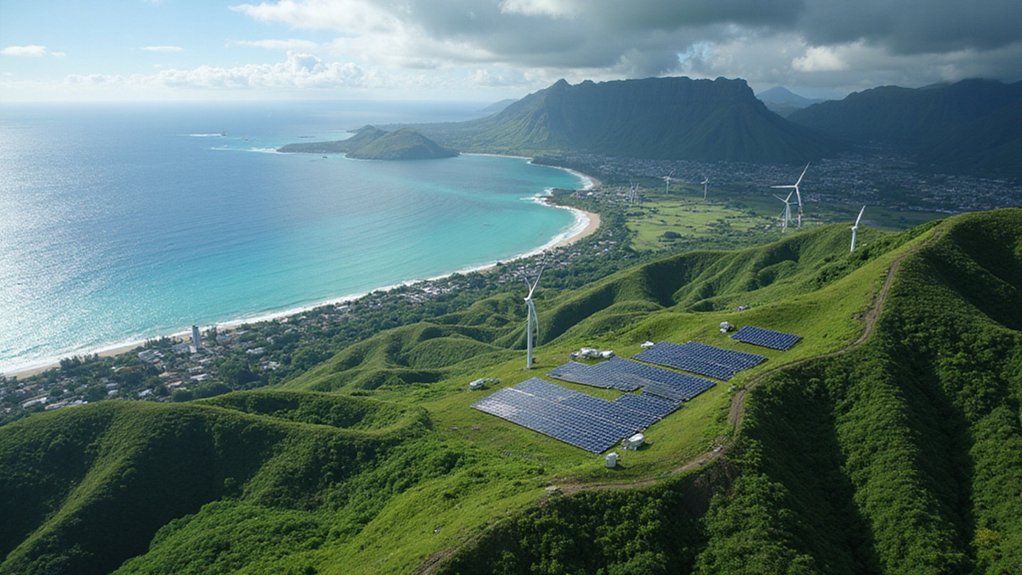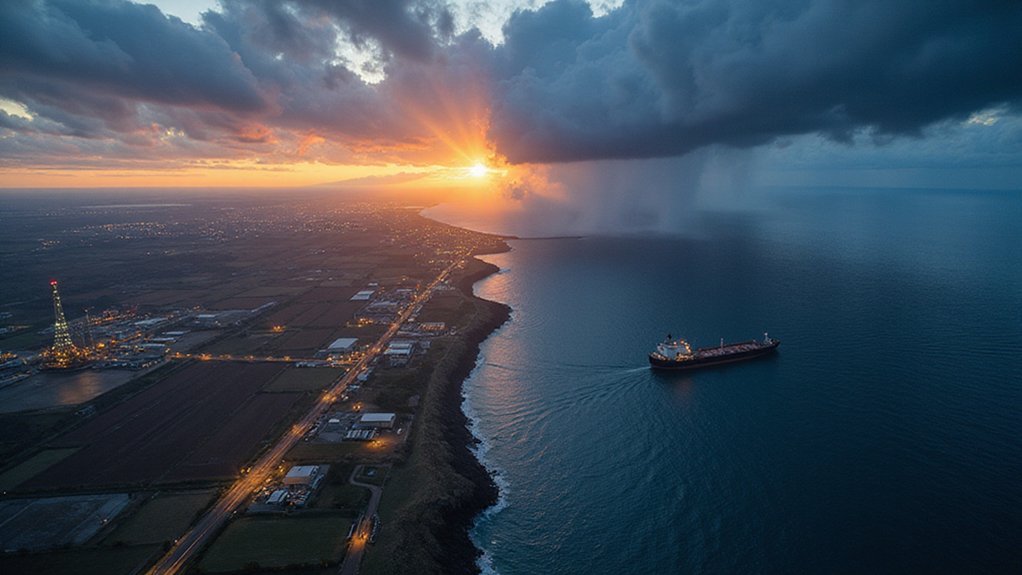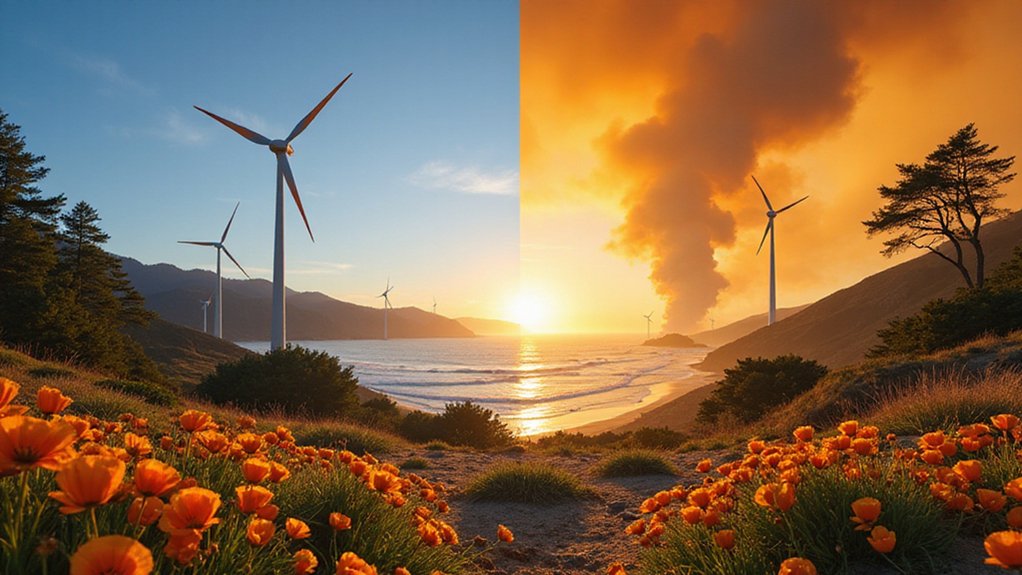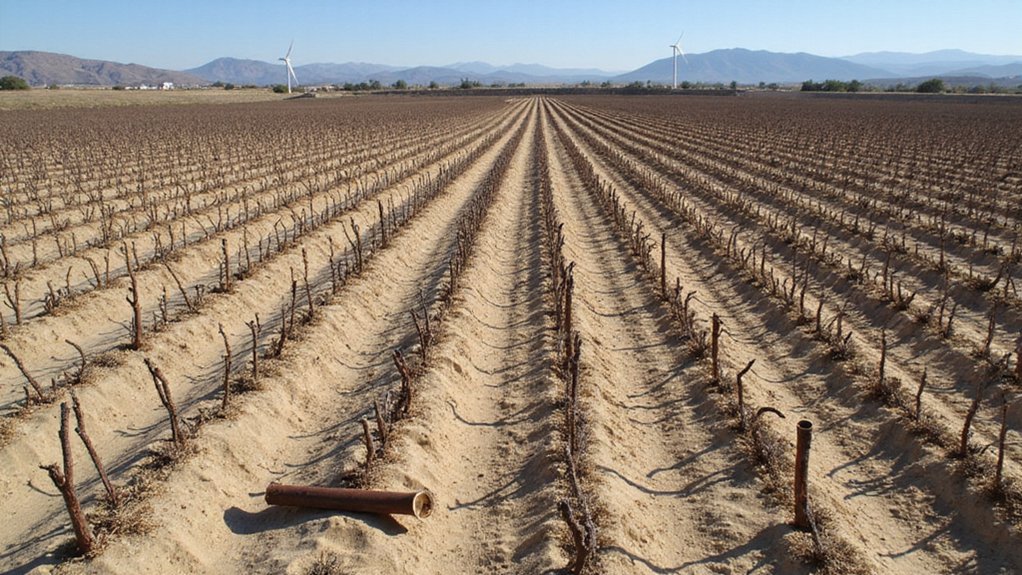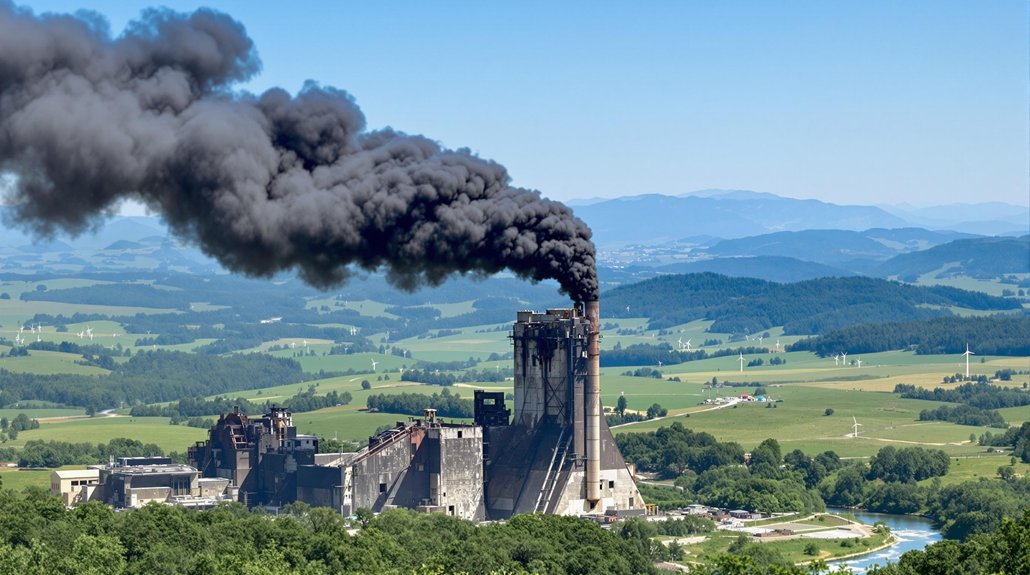Hawaii’s clean energy target of 100% renewable electricity by 2045 faces serious obstacles. Despite progress (33% renewable currently), doubling electricity demands, limited land availability, and infrastructure challenges are threatening the initiative. The Maui wildfires didn’t help, destroying 6 MW of solar capacity. Hawaiian Electric still aims to cut carbon emissions 70% by 2030, but reality’s hitting hard. The gap between ambitious climate goals and practical implementation keeps widening with each passing year.
While many states talk about clean energy, Hawaii is actually doing something about it. Since 2008, the Aloha State has been pursuing an ambitious clean energy initiative with the U.S. Department of Energy. The goal? Nothing short of 100% renewable electricity by 2045. Yeah, you read that right. The entire state. No fossil fuels. Zero. Nada.
They’re making progress too. As of 2023, 33% of Hawaii’s electricity comes from renewable sources statewide. Not bad. The state’s 2030 milestone is 40% renewable generation, which seems within reach. Until recently, they calculated their progress differently and would’ve hit 41% already. But hey, accuracy matters.
But paradise has problems. Big ones. Electricity demand is projected to double by 2045. Double! Try building enough solar farms and wind turbines for that. And where exactly will they go? Land in Hawaii isn’t exactly abundant, and everyone wants a piece – housing developers, farmers, and now clean energy companies. Geothermal power from the Puna Geothermal Venture currently provides about 30% of the Big Island’s electricity, offering a consistent energy source regardless of weather conditions.
The state’s ambitions go beyond just clean electricity. Hawaii wants to be carbon negative by 2045. That means sequestering more greenhouse gases than they emit. Hawaiian Electric is planning to slash carbon emissions 70% from 2005 levels by 2030. The state law mandates net-zero greenhouse gas emissions by this same deadline, making Hawaii’s climate goals among the most aggressive in the nation. Ambitious doesn’t begin to cover it.
The regulatory framework is there. The political will exists. But reality is stubborn. Grid upgrades, infrastructure investment, and stakeholder coordination across government, utilities, and communities remain formidable challenges. The devastating Maui wildfires in August 2023 damaged renewable infrastructure, including 6 MW of rooftop solar capacity.
There’s an economic upside to all this renewable energy dreaming. New jobs. Investment opportunities. Energy independence. Hawaii currently imports fossil fuels at enormous expense. Cutting that dependency could be transformative for the local economy.
The shift won’t be easy or cheap. It requires total economic and regulatory overhaul. But Hawaii seems determined to prove it’s possible. They’re pursuing the nation’s first 100% renewable portfolio standard while the rest of us debate whether climate change is real. At least somebody’s trying.
References
- https://energy.hawaii.gov/hawaii-clean-energy-initiative/
- https://energy.hawaii.gov/clean-energy-vision/
- https://www.eia.gov/state/print.php?sid=HI
- https://www.civilbeat.org/2023/07/hawaiis-clean-energy-transition-faces-steep-hurdles-study-finds/
- https://www.hawaiianelectric.com/hawaiian-electric-achieves-33-renewable-energy-in-2023
